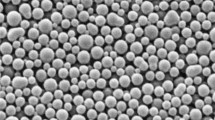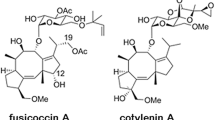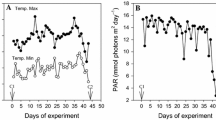Abstract
Antiviral drugs have demonstrated significant therapeutic potential against phytoviruses, such as inosine monophosphate dehydrogenase inhibitors like mycophenolic acid or thiopurines. However, drug delivery across cellular barriers is a challenging task that calls for investigation. In this study, membrane transport of three antiviral drugs such as mycophenolic acid (MPA), 6-mercaptopurine (6-MP) and 6-thioguanine (6-TG) was investigated in order to determine the mechanism involved in transmembrane flux. Electrophysiological tests were carried out on leaves of in vitro grapevine explants naturally infected by Grapevine leafroll associated virus 1 as well as virus-free explants treated with antiviral drugs. Results indicate that membrane electrical responses of the tested antiviral dugs are supported by the metabolism, and virus infection did not cause differences in membrane potential tests. The extent of depolarization was slight for MPA and 6-TG and greater for 6-MP. Complete repolarization always occurred and, in many cases, the electrical potential was greater than the starting level (overshoot). Treatments at 5 °C or in presence of CCCP, an uncoupler of oxidative phosphorylation, led to inhibition of drug effects of the membrane potential, suggesting a metabolic dependence of the transport. However, treatments carried out under sodium orthovanadate, a specific inhibitor of H+-ATPase, prove, although only partially, the activity of a proton pump. The complex of electrophysiological tests highlights that drugs such as MPA, 6-MP and 6-TG, when applied to infected or healthy grapevine leaf segments, lead to clear, biphasic, electrical membrane response suggesting an operation of H+ co-transport through systems that link substrate translocation across the membrane to the free energy available in a proton electrochemical potential difference.




Similar content being viewed by others
References
Anand BS, Dey S, Mitra AK (2002) Current prodrug strategies via membrane transporters/receptors. Expert Opin Biol Ther 2:607–620
Bellando M, Marré MT, Sacco S, Talarico A, Venegoni A, Marré E (1995) Transmembrane potential-mediated coupling between H+ pump operation and K+ fluxes in Elodea densa leaves hyperpolarized by fusicoccin, light or acid load. Plant Cell Environ 18:963–976
Bertoni P, Biricolti S, Panattoni A, Triolo E (2000) Micropropagation and effects of drugs with antiviral properties: trials on cv. Sangiovese. Proc Int Symp Il Sangiovese 1:321–325
Brandsch M, Knutter I, Bosse-Doenecke E (2008) Pharmaceutical and pharmacological importance of peptide transporters. J Pharm Pharmacol 60:543–585
Bush DR (1993) Proton-coupled sugar and amino acid transporters in plants. Annu Rev Plant Physiol Plant Mol Biol 44:513–542
Cabrita MA, Baldwin SA, Young JD, Cass CE (2002) Molecular biology and regulation of nucleoside and nucleobase transporter proteins in eukaryotes and prokaryotes. Biochem Cell Biol 80:623–638
Colombo R, Bonetti A, Cerana R, Lado P (1981) Effect of plasmalemma ATPase inhibitors, diethylstilbestrol and orthovanadate, on fusicoccin-induced H+ extrusion in maize roots. Plant Sci Lett 21:305–315
Cruz-Mireles RM, Ortega-Blake I (1991) Effect of Na3VO4 on the P state of Nitella translucens. Plant Physiol 96:91–97
D’Anna F (ed) (2006) Antiviral thermo- and chemotherapy in vitro. ARACNE, Roma
D’Anna F, Panattoni A, Triolo E (2006) Emerging antiviral drugs in plant chemotherapy. J Plant Pathol 88:39
Felle H (1987) Proton transport and pH control in Sinapis alba root hairs: a study carried out with double-barrelled pH microelectrodes. J Exp Bot 38:340–354
Felle H (1988) Short-term pH regulation in plants. Physiologia Plant 74:583–591
Gillissen B, Burkle L, André B, Kuhn C, Rentsch D, Brandl B, Frommer WB (2000) A new family of high affinity transporters for adenine, cytosine and purine derivatives in Arabidopsis. Plant Cell 12:291–300
Guta IC, Buciumeanu EC, Gheorghe RN, Teodorescu A (2010) Solutions to eliminate grapevine leafroll associated virus serotype 1+3 from V. vinifera L. cv. Ranai Magaraci. Rom Biotech Lett 15:72–78
Hille B (ed) (1992) Ionic channels of excitable membranes. Sinauer Associates Inc., Sunderland
Huang QQ, Yao SY, Ritzel MW, Paterson AR, Cass CE, Young JD (1994) Cloning and functional expression of a complementary DNA encoding a mammalian nucleoside transport protein. J Biol Chem 269:17757–17760
Hyde RJ, Cass CE, Young JD, Baldwin SA (2001) The ENT family of eukaryote nucleoside and nucleobase transporters: recent advances in the investigation of structure/function relationships and the identification of novel isoforms. Mol Membr Biol 18:53–63
Keller CP, Van Volkenburgh E (1998) Evidence that auxin-induced growth of tobacco leaf tissue does not involve cell wall acidification. Plant Physiol 118:557–564
Kitchin JES, Pomeranz MK, Pak G, Washenik K, Shupack JL (1997) Rediscovering mycophenolic acid: a review of its mechanism, side effects and potential uses. J Am Acad Dermatol 37:445–449
Lalanne M, Andrieux K, Couvreur P (2009) Strategies to increase the oral bioavailability of nucleoside analogs. Curr Med Chem 16:1391–1399
Lew RR, Dearnaley JDW (2000) Extracellular nucleotide effects on the electrical properties of growing Arabidopsis thaliana root hairs. Plant Sci 153:1–6
Li G, Luo RH, Metz SA (2000) Effects of inhibitors of guanine nucleotide synthesis on membrane potential and cytosolic free Ca++ levels in insulin-secreting cells. Biochem Pharmacol 59:545–556
Li G, Liu K, Baldwin SA, Wang D (2003) Equilibrative nucleoside transporters of Arabidopsis thaliana. J Biol Chem 278:35732–35742
Luvisi A, Panattoni A, Triolo E (2011) Thiopurine prodrugs for plant chemotherapy purposes. J Phytopathol 159:390–392
MacKenzie DJ, McLean MA, Mukerji S, Green M (1997) Improved RNA extraction from woody plants for the detection of viral pathogens by reverse transcription-polymerase chain reaction. Plant Dis 81:222–226
Majumdar S, Mitra AK (2006) Chemical modification and formulation approaches to elevated drug transport across cell membranes. Expert Opin Drug Deliv 3:511–527
Marré E, Lado P, Rasi Caldogno F, Colombo R (1973) Correlation between cell enlargement in pea internode segments and decrease in the pH of the medium of incubation. II. Effects of inhibitors of respiration, oxidative phosphorylation and protein synthesis. Plant Sci Lett 1:185–192
Marré MT, Albergoni FG, Moroni A, Pugliarello MC (1989) Evidence that H+ extrusion in Elodea densa leaves is mediated by an ATP-driven H+ pump. Plant Sci 62:21–28
Mengel K, Schubert S (1985) Active extrusion of protons into deionized water by roots of intact maize plants. Plant Physiol 79:344–348
Michelet B, Boutry M (1995) The plasma membrane H+-ATPase. A highly regulated enzyme with multiple physiological functions. Plant Physiol 108:1–6
Mitchell P (1961) Coupling of phosphorylation to electron and hydrogen transfer by a chemi-osmotic type of mechanism. Nature 191:144–148
Miyazaki H, Sekine T, Endou H (2004) The multispecific organic anion transporter family: properties and pharmacological significance. Trends Pharmacol Sci 25:654–662
Mizuno N, Niwa T, Yotsumoto Y, Sugiyama Y (2003) Impact of drug transporter studies on drug discovery and development. Pharmacol Rev 55:425–461
Mohlmann T, Mezher Z, Schwerdtfeger G, Neuhaus HE (2001) Characterisation of a concentrative type of adenosine transporter from Arabidopsis thaliana (ENT1,At). FEBS Lett 509:370–374
Nakaune R, Nakano M (2006) Efficient methods for sample processing and cDNA synthesis by RT-PCR for the detection of grapevine viruses and viroids. J Virol Methods 134:244–249
O’Neill SD, Spanswick RM (1984) Effects of vanadate on the plasma membrane ATPase of red beet and corn. Plant Physiol 75:586–591
Panattoni A, D’Anna F, Triolo E (2007) Antiviral activity of tiazofurin and mycophenolic acid against Grapevine Leafroll-associated Virus 3 in Vitis vinifera explants. Antivir Res 73:206–211
Ridge I, Omer J, Osborne DJ (1998) Different effects on net proton secretion in the fern Regnellidium diphyllum and the dicotyledon Nymphoides peltata: relevance to cell growth. J Plant Physiol 153:430–436
Rinaldelli E (2000) Genotypic, electrophysiological responses of leaf cells to NaCl salinity in Olea europaea L. Adv Hort Sci 14:75–82
Rinaldelli E (2005) Plasmalemma redox systems and membrane depolarization in leaf cells of Olea europaea L. Adv Hort Sci 19:176–180
Rinaldelli E, Bandinelli R (1999) Proton extrusion in leaves of Olea europaea L., cv. Frantoio and evidence for an ATP-driven H+ pump. A study carried out under different chemical, physical, and electrophysiological conditions. Adv Hort Sci 13:113–124
Rubio-Aliaga I, Daniel H (2008) Peptide transporters and their roles in physiological processes and drug disposition. Xenobiotica 38:1022–1042
Shitara Y, Horie T, Sugiyama Y (2006) Transporters as a determinant of drug clearance and tissue distribution. Eur J Pharm Sci 27:425–446
Sidwell RW, Huffman JH, Khare GP, Allen LB, Witkowski JT, Robins RK (1972) Broad-spectrum antiviral activity of virazole: 1-β-D-ribofuranosyl-1,2,4-triazole-3-carboxamide. Science 177:705–706
Skiada F, Maliogka VI, Eleftheriou EP, Katis NI (2009) Advances on the eradication of Grapevine rupestris stem pitting associated virus (GRSPaV) from Vitis vinifera explants. In: Proceedings of the 16th Meeting of ICVG, France, pp 262–263
Sze H, Li X, Palmgren MG (1999) Energization of plant cell membranes by H+-pumping ATPases: regulation and biosynthesis. Plant Cell 11:677–690
Ullrich-Eberius CI, Sanz A, Novacky AJ (1989) Evaluation of arsenate- and vanadate-associated changes of electrical membrane potential and phosphate transport in Lemna gibba G1. J Exp Bot 40:119–128
Uwai Y, Motohashi H, Tsuji Y, Ueo H, Katsura T, Inui K (2007) Interaction and transport characteristics of mycophenolic acid and its glucuronide via human organic anion transporters hOAT1 and hOAT3. Biochem Pharmacol 74:161–168
Vreugdenhil D, Spanswick RM (1987) The effect of vanadate on proton-sucrose cotransport in Ricinus cotyledons. Plant Physiol 84:605–608
Weiland CM, Cantos M, Troncoso A, Perez-Camacho F (2004) Regeneration of virus-free plants by in vitro chemotherapy of GFLV (Grapevine fanleaf virus) infected explants of Vitis vinifera L. cv “Zalema”. Acta Hortic 652:463–466
Conflict of interest
The authors declare that they have no conflict of interest.
Author information
Authors and Affiliations
Corresponding author
Additional information
Communicated by B. Barna.
Rights and permissions
About this article
Cite this article
Luvisi, A., Rinaldelli, E., Panattoni, A. et al. Membrane transport of antiviral drugs in plants: an electrophysiological study in grapevine explants infected by Grapevine leafroll associated virus 1. Acta Physiol Plant 34, 2115–2123 (2012). https://doi.org/10.1007/s11738-012-1012-0
Received:
Revised:
Accepted:
Published:
Issue Date:
DOI: https://doi.org/10.1007/s11738-012-1012-0




